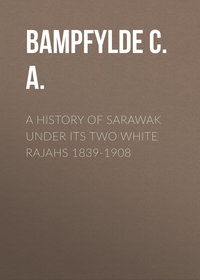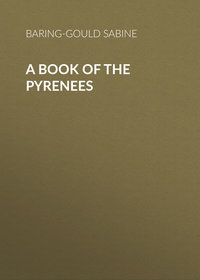 полная версия
полная версияThe Lives of the Saints, Volume II (of 16): February
In French, S. John is called S. Jean de la Grille; in Latin, S. Joannes de Craticula.
B. RAYMOND OF FITERO, AB. C(A.D. 1163.)[Cistercian Breviary. Authority: – Radez, Chronic de las ordines y Cavall. de Santiago, Calatrava, y Alcantara.]
In the year a. d. 714, the Moors, having conquered King Roderick, took possession of Andalusia, and fortified the city of Oreto, to which they gave the name of Calatrava; of which they remained masters for nearly four hundred years, till Alfonso the Warlike took possession of it, in the year 1147, and gave it to the Templars, to guard against the irruption of the infidels. But they held it for only eight years. The forces which the Moors assembled to recover Calatrava so discouraged them, that they gave up the city into the hands of Don Sancho, who had succeeded to the kingdom of Castille, on the death of Alfonso, and withdrew from it. This prince announced to his court that if any nobleman would undertake the defence of the place, he should have and hold it, in perpetuity, as his own property. But no one offered; the host of the Moors which had so alarmed the Templars, caused equal dismay in the minds of the nobles at court. A monk of the order of Citeaux alone had courage to undertake the defence of the town. This was Don Didacus Velasquez, monk of the abbey of Our Lady of Fitero, in the kingdom of Navarre. He had borne arms before he assumed the white habit of Citeaux, and was well known to King Sancho, and this perhaps was the reason why his abbot, Don Raymond, had taken him with him on a visit to the king, about some matter concerning his monastery, at this very time. He entreated the abbot to allow him to ask permission of Sancho to undertake the defence of Calatrava. Raymond, at first, rejected the proposal, but at length, gained by the zeal and confidence of Didacus, he boldly asked the city of the prince. He was regarded as mad, but Sancho was prevailed upon by the evident assurance of the two monks to give the town of Calatrava to the Cistercian Order, and especially to the abbey of Fitero, on condition that the monks held it against the infidels. This was in 1158.
The abbot Raymond and his companion Velasquez then proposed to the king to found a military Order of Calatrava, and after having obtained his consent, they communicated their design to the bishop of Toledo, who not only approved it, but gave them a large sum of money for the fortification of the town, and accorded indulgences to all such as should take arms in its defence, or contribute arms or money for the purpose. Several persons joined the two monks, and in a short while an army was raised, at the head of which they entered Calatrava, and took possession of it. The walls were repaired and completed with such expedition and strength, that the Moors abandoned their purpose of attacking it, and withdrew.
The abbot Raymond, having nothing further to fear from the infidels, applied himself to organise the new military Order, which took its name from this town. The general chapter of Citeaux prescribed the manner of life and habit of these warrior monks, but historians are not agreed as to the colour or shape of the original habit.
As the territory of Calatrava was almost devoid of inhabitants, the abbot Raymond returned to Fitero, where he left only the aged and infirm monks, bringing all who were active and young to Calatrava, together with a great number of cattle, and twenty thousand peasants, that he might settle them in the newly acquired territory. He governed the order six years, and died at Cirvelos, in the year 1163. After his death, the knights of Calatrava, although they were novices of Citeaux into whose hands he had put arms, refused to be governed by an abbot, and to have monks among them. They elected as their Grand Master one of their number, Don Garcias; and the monks, who had chosen their new abbot, Don Rudolf, retired with him to Cirvelos, where they began an action against the knights, to eject them, that they might recover possession of Calatrava, which the king had given to their order, and especially to their house of Fitero. But a reconciliation was effected, probably through fear of the Moors, and the knights ceded to them a house at S. Petro de Gurniel, in the diocese of Osma, with all its dependencies, and there they built a monastery, leaving Calatrava in the hands of the knights.
In the year 1540, the knights were allowed to marry, and took only the vows of poverty, obedience, and conjugal fidelity; since the year 1652, they have added a fourth; to defend and maintain the Immaculate Conception of the blessed Virgin.
S. VERDIANA, V. R(A.D. 1242.)[Roman and Benedictine Martyrology, those of Menardus, Ferrarius, &c. Authority: – An old contemporary life, falsely attributed to Atto, B. of Pistoria.]
Verdiana was the child of poor, though well-born parents; and her knowledge of the sufferings of the poor from her own experience in early years made her ever full of pity for those in need. At twelve years old she was noted for her beautiful and modest countenance, and humble deportment. A wealthy relation, a count, took her into his house, and made her wait upon his wife. Her strict probity and scrupulous discharge of her duties so gained the confidence of her master and mistress, that they entrusted to her the entire management of their house. One day that there was a famine raging in the diocese of Florence, and the poor were in extreme distress, the girl saw some miserable wretches dying from exhaustion at the door. Her master had a vessel of beans, and she hastily emptied the box, and fed the starving wretches with them. This would have been an act of questionable morality, were it not for the extremity of the case, when, to save life, an act is justified which would have been unjust were there no such an imperious necessity. Her master had, in the meantime, sold the beans, and he shortly after returned with the money. He went to the vessel, to send it to the purchaser, but found it empty. "Then," says the contemporary writer, "he began to shout and storm against the servants, and make such a to-do as to cause great scandal in the house and among the neighbours. Now when all the house was turned topsy-turvy about these beans, and was in an uproar, the lord's hand-maiden, with great confidence, betook herself to prayer, and spent the night in supplication. And on the morrow, the vessel was found full of beans as before. Then the master was called, and she bade him abstain for the future from such violence, for Christ who had received the beans had returned them."
By the kindness of the Count, her relative, she was enabled to make a pilgrimage to S. James, of Compostella, in company with a pious lady. On her return, she resolved to adopt the life of a recluse, and after long preparation, and a visit to Rome, where she spent three years, she obtained the desire of her heart, and received the veil from the hands of a canon of the Church of Castel Fiorentino, her native place, and bearing the Cross, preceded and followed by all the clergy and people, she was conducted to her cell, and, having been admitted into it, the door was walled up. In this cell she spent many years, conversing with those who visited her, and receiving her food through a window, through which, also, the priest communicated her. Two large snakes crept in at this window, one day, and thenceforth took up their abode with her. She received these fellow-comrades with great repugnance, but overcame it, and fed them from her own store of provisions. They would glide forth when no one was near, but never failed to return for the night, and when she took her meals. On one occasion they were injured by some peasants who pursued them with sticks and stones. Verdiana healed them, nevertheless the rustics attacked them again, killed one, and drove the other away, so that it never returned to the cell of the recluse.
When the holy woman felt that the hour of her release approached, she made her last confession and received the Blessed Sacrament through her window, and then closing it opened her psalter, and began to recite the penitential psalms. Next morning the people finding the window closed, and receiving no answer to their taps, broke into the cell, and found her dead, kneeling with eyes and hands upraised to heaven, and the psalter before her open at the psalm Miserere mihi, "Have mercy upon me, O God! after Thy great goodness; and according to the multitude of Thy mercies, do away mine offences."
February 2
The Purification of S. MaryS. Cornelius, the Centurion, B. of Cæsarea, 1st cent.
S. Flosculus, B. of Orleans, circ. a. d. 500.
S. Laurence, Abp. of Canterbury, a. d. 619.
S. Adalbald, C. in Belgium and Aquitaine, a. d. 652.
S. Adeloga, V. Abss. at Kitzingen, 8th cent.
SS. Martyrs, of Ebbecksdorf, a. d. 880.
B. Peter Cambian, O. S.D., M. in Piedmont, a. d. 1365.
THE PURIFICATION OF S. MARY, OR THEPRESENTATION OF CHRIST IN THE TEMPLETHE PURIFICATION is a double feast, partly in memory of the B. Virgin's purification, this being the fortieth day after the birth of her Son, which she observed according to the Law (Leviticus xii. 4), though there was no need for such a ceremony, she having contracted no defilement through her childbearing. Partly also in memory of Our Lord's presentation in the temple, which the Gospel for the day commemorates.
The Old Law commanded, that a woman having conceived by a man, if she brought forth a male child, should remain forty days retired in her house, as unclean; at the end of which she should go to the temple to be purified, and offer a lamb and a turtle dove; but, if she were poor, a pair of turtle doves or pigeons, desiring the priest to pray to God for her. This law the Blessed Virgin accomplished (Luke ii. 12) with the exercise of admirable virtues; especially did she exhibit her obedience, although she knew that she was not obliged to keep the law, yet, inasmuch as her Son had consented to be circumcised, though He needed it not, so did she stoop to fulfil the law, lest she should offend others. She also exhibited her humility, in being willing to be treated as one unclean, and as one that stood in need of being purified, as if she had not been immaculate. Among the Greeks, the festival goes by the name of Hypapante, which denotes the meeting of our Lord by Symeon and Anna, in the temple; in commemoration of which occurrence it was first made a festival in the Church by the emperor Justinian I., a. d. 542. The emperor is said to have instituted it on occasion of an earthquake, which destroyed half the city of Pompeiopolis, and of other calamities. It was considered in the Greek Church as one of the feasts belonging to her Lord (Despotikaì Heortaì). The name of the Purification was given to it in the 9th century by the Roman pontiffs. In the Greek Church the prelude of this festival, which retains its first name, Hypapante, is "My soul doth magnify the Lord, for He hath regarded the lowliness of his hand-maiden;" and a festival of Symeon and Anna is observed on the following day.
In the Western Church it has usually been called "Candlemas Day," from the custom of lighting up churches with tapers and lamps in remembrance of our Saviour having been this day declared by Symeon to be "a light to lighten the Gentiles." Processions were used with a similar object, of which S. Bernard gives the following description: – "We go in procession, two by two, carrying candles in our hands, which are lighted not at a common fire, but a fire first blessed in the church by a bishop. They that go out first return last; and in the way we sing, 'Great is the glory of the Lord.' We go two by two in commendation of charity and a social life; for so our Saviour sent out his disciples. We carry light in our hands: first, to signify that our light should shine before men; secondly, this we do on this day, especially, in memory of the Wise Virgins (of whom this blessed Virgin is the chief) that went to meet their Lord with their lamps lit and burning. And from this usage and the many lights set up in the church this day, it is called Candelaria, or Candlemas. Because our works should be all done in the holy fire of charity, therefore the candles are lit with holy fire. They that go out first return last, to teach humility, 'in humility preferring one another.' Because God loveth a cheerful giver, therefore we sing in the way. The procession itself is to teach us that we should not stand idle in the way of life, but proceed from virtue to virtue, not looking back to that which is behind, but reaching forward to that which is before."
The Purification is a common subject of representation in Christian art, both Eastern and Western. From the evident unsuitableness of the mystery of the Circumcision to actual representation, it is not usually depicted in works of art, and the Presentation in the Temple has been generally selected, with better taste, for this purpose. The prophecy of Symeon, "Yea, a sword shall pierce through Thine own soul also," made to the blessed Virgin, is the first of her seven sorrows.
The Christian rite of "The Churching of Women" is a perpetuation of the ancient ceremony required by the Mosaic Law. How long a particular office has been used in the Christian Church, for the thanksgiving and benediction of woman after child-birth, it would be difficult to say; but it is probably most ancient, since we find that all the Western rituals, and those of the patriarchate of Constantinople, contain such an office. The Greeks appoint three prayers for the mother on the first day of the child's birth. On the eighth day, the nurse brings the child to church, and prayer is made for him before the entrance to the nave. On the fortieth day, the mother and the future sponsor at the child's baptism bring the child. After an introductory service of the usual kind, the mother, holding the child, bows her head; the priest crosses the child, and touching his head, says, "Let us pray unto the Lord; O Lord God Almighty, the Father of our Lord Jesus Christ, who didst create by Thy word all creatures, rational and irrational, who didst bring into being all things out of nothing; we beseech and entreat Thee, purify from all sin and pollution this Thy handmaid, whom by Thy will, Thou hast preserved and permitted to enter into Thy holy Church; that she may be deemed worthy to partake, without condemnation, of Thy holy mysteries." (If the child has not survived, the prayer ends here; if it be alive, the priest continues), "And bless the child born of her. Increase, sanctify, direct, teach, guide him; for Thou hast brought him to the birth and hast shown him the light of this world; that so he may be deemed worthy of the mental light at the time that Thou hast ordained, and be numbered among Thy holy flock: through Thy only begotten Son, with whom Thou art blessed, together with Thy all-holy, good, life-giving Spirit, now, always, and for ever and ever."
Other prayers referring to the mother of the child follow. Allusion is made to the presentation of Christ, in the Temple. The child is taken in the priest's arms to various parts of the church as an introduction to the sanctuary. A boy is taken to the altar; a girl only to the central door of the screen. There is a separate form in case of miscarriage.
S. CORNELIUS THE CENTURION, B(1ST CENT.)[Roman and other Western Martyrologies. Commemorated by the Greeks on Sept. 13th. Authorities: – The Acts of the Holy Apostles, c. 10, the notices in the Martyrologies, and allusions in the Epistles of S. Jerome. The Acts given by Metaphrastes are not deserving of much attention.]
Cornelius, the centurion, was officer of the Italian band at Cæsarea. He was a devout proselyte, who feared God, with all his household, and gave much alms to the poor and prayed often and earnestly to God. He saw in a vision an angel, who told him that his prayers and alms had come up for a memorial before God, and that he was now to hear the words of Salvation, and to be instructed in the fulness of divine truth. He was to send to Joppa, to the house of one Simon, a tanner, for S. Peter, the prince of the Apostles, who would instruct and baptize him.
This he accordingly did, and S. Peter, hastening to Cæsarea, baptized him and all his house. And the Holy Ghost fell upon them.
Cornelius was afterwards, by S. Peter, ordained bishop of Cæsarea, where he strove mightily to advance the kingdom of Christ, and witnessed a good confession before the chief magistrate. He died at a ripe old age, and was buried secretly in a tomb belonging to a friend, a Christian of wealth. And, it is said, that a bramble grew over the spot and laced the entrance over with its thorny arms, so that none could enter in till S. Silvanus, bishop of Philippopolis, in Thrace, in the beginning of the 5th century, hacked away the bramble, and discovered, and translated the sacred relics.
S. LAURENCE, ABP. OF CANTERBURY(A.D. 619.)[Roman and other Western Martyrologies. Authorities: – Bede, Hist. Eccl. lib. ii. c. 4, 6, 7. Malmesbury lib. de Gest. Pontif. Angl.]
Laurence was one of the first missionaries to the Saxons, who came over with S. Augustine; and he succeeded the Apostle of England in the see of Canterbury, in 608, in which he sat eleven years. Bede says, "Laurence succeeded Augustine in the bishopric, having been ordained thereto by the latter, in his lifetime, lest, upon his death, the state of the Church, as yet unsettled, might begin to falter, if it were destitute of a pastor, though but for one hour. Wherein he followed the example of the first pastor of the Church, Peter, who, having founded the Church of Christ at Rome, is said to have consecrated Clement his assistant in preaching the Gospel, and at the same time, his successor. Laurence, being advanced to the degree of archbishop, laboured indefatigably, both by frequent exhortations and examples of piety, to raise to perfection the foundation of the Church, which had been so nobly laid. In short, he not only took care of the new Church formed among the English, but endeavoured also to employ his pastoral solicitude among the ancient inhabitants of Britain, as also among the Scots, who inhabited the island of Ireland. For when he understood that the course of life and profession of the Scots, as well as that of the Britons, was not truly ecclesiastical, especially that they did not celebrate Easter at the correct time, he wrote jointly with his fellow-bishops, an exhortatory epistle, entreating and conjuring them to observe unity of peace, and conformity with the Church of Christ spread throughout the world."
But soon troubles arose which obliged Archbishop Laurence to withdraw his attention from the British bishops to the condition of his own Kentish diocese. The pious King Ethelbert died, and his son Eadbald, instead of following his father's example, opposed Christianity, and caused great scandal by taking to him his step-mother to wife, his own mother, the saintly Bertha, having died some years before. The condition of Christianity became so hopeless in Kent, that Laurence resolved to desert his see, and he was confirmed in his determination by Mellitus, bishop of London, and Justus, bishop of Rochester, who fled from the violence of the sons and successors of the Christian Sebert, king of the East Saxons. Bede says, "Laurence, being about to follow Mellitus and Justus, and to quit Britain, ordered his bed to be laid, the night before, in the church of the blessed Apostles, Peter and Paul; wherein, having laid himself to take some rest, after he had poured out many prayers and tears to God for the state of the Church, he fell asleep. In the dead of the night, the blessed prince of the apostles appeared to him, and scourging him a long time with apostolic severity, asked of him, 'Why he would forsake the flock which he had committed to him? or to what shepherds he would commit Christ's sheep that were in the midst of wolves? Have you,' said he, 'forgotten my example, who, for the sake of those little ones, whom Christ recommended to me in token of His affection, underwent at the hands of the infidels and enemies of Christ, bonds, stripes, imprisonment, afflictions, and lastly, the death of the cross, that I might be crowned with Him?' Laurence being excited by these words and stripes, the very next morning repaired to the king, and taking off his garment, showed the scars of the stripes he had received. The king astonished, asked, 'Who had presumed to give such blows to so great a man?' and was much frightened when he heard that the bishop had suffered so much at the hands of the apostle of Christ for his salvation. Then, abjuring the worship of idols, and renouncing his unlawful marriage, he embraced the faith of Christ, and being baptized, promoted the affairs of the Church to the utmost of his power."
In the reign of this same king, Archbishop Laurence died, and was buried in the Church of S. Peter, close beside his predecessor Augustine, and was succeeded by Mellitus.
S. ADALBALD, C(ABOUT A.D. 652.)[Belgian Martyrologies, and in Saussaye's supplement to the Gallican Martyrology. Authorities: – Mention of him in the life of his wife S. Richtrudis, by Hucbald the monk, a. d. 907; and in the life of his daughter, S. Eusebia. In some Martyrologies he is styled Martyr, but generally Duke.]
Duke Adalbald was a grandson of S. Gertrude of Hamage. His mother's name was Gerberta. From his earliest youth he was a model of virtue, even in the court of the king. He married S. Richtrudis, by whom he had S. Maurontus, his eldest son, who became afterwards abbot; and three virgin saintly daughters, Clotsendis, Eusebia, and Andalsendis. S. Amandus baptized Clotsendis, and Queen Nanthild, wife of King Dagobert, was sponsor to Eusebia. On his way to Gascony for some purpose, he was waylaid and murdered, by certain persons who were displeased at his marriage with Richtrudis. It seems probable, therefore, that the crime was committed on account of some property, but nothing for certain is known of the motive actuating the murderers. Relics at S. Amand, in Flanders.
S. ADELOGA, V. ABSS(8TH CENT.)[Benedictine Martyrology and those of Menardus, Ferrarius, &c. Authority: – An ancient, apparently authentic, life by an anonymous writer, published by Bollandus.]
The blessed Adeloga was a daughter of Charles Martel, son of Pepin l'Heristal, by Kunehilda, whether his wife or concubine is uncertain. Adeloga was of singular beauty, so that she was greatly sought in marriage, but she constantly refused all offers, having given her heart wholly to her heavenly Spouse. Her father, greatly exasperated against her, on this account, treated her with studied brutality, subjecting her to public insult; and observing that the bruised spirit of his child sought refuge and comfort in the advice of her director, his private chaplain, he was filled with bitterness, and said, "Hearken, my daughter, you have refused kings, dukes, and peers to anger me, that you might wanton with a curate." Then calling to him one of his knights, who stood by, as he thus insulted his daughter, he bade him "Go and tell the chaplain to be off, he and his woman here, or they shall both be driven forth with contumely, to-morrow morning."
Hearing this, the priest groaned in spirit, and said, "O God of heaven and earth, who searchest the secrets of all hearts, and every thought of man, Thou knowest my innocence in this matter. But, although my lord has exercised his anger upon me, I will not desert my lady and mistress, but for Christ's sake will wait upon her with all reverence."
Then Adeloga went forth, and the priest with her, and they journeyed till they came to a wild and desert place, and there they built a convent. The name of the place was Kitzingen.
To her came many virgins, and the priest gave her the veil, and made her abbess, enjoining her to adopt the rule of SS. Benedict and Scholastica. He, himself, attended to the temporal affairs of the convent, till he was summoned to his rest.
The story is told that after his death, a young nun, having fallen in love with a youth, resolved to fly the convent. She waited till night, and then, when all were asleep, stole to the gates, but there she saw the form of the white-haired chaplain beckoning her back, and with a gentle voice addressing her, "Go back, dear virgin! A heavenly Spouse calleth thee, and no earthly lover! Return to him, my child. I watch without over this sacred house, and the abbess keeps ward within." And not many days after, the girl sickened and died.









